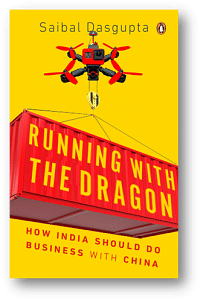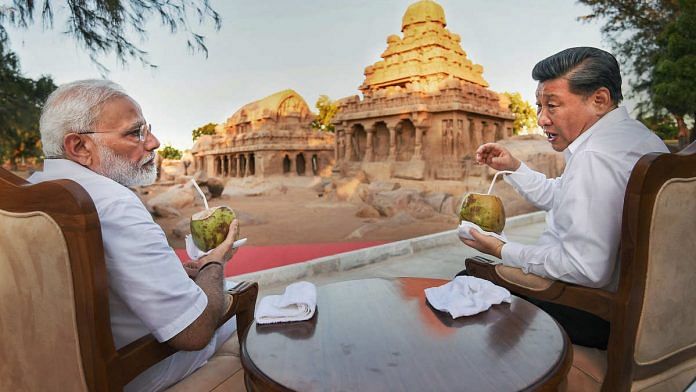Analysts believe that investors from China have intelligently synchronized the government’s Make in India programme with their investments. This is what they do in the case of the domestic industry, as everyone abides by the government line because it fits the investors’ long-term goals.
The Chinese do not align their investments because of the fear of the authorities, as the Western media would have us believe. It is part of the centuries-old Confucian culture in China to abide by the authorities, who are regarded as parents and guardians. As with any international investors, Chinese investors also look at tax-saving opportunities to decide not just the destination of investment but also the source from which the money will flow. This is why some Chinese FDI has come from Chinese subsidiaries in countries that have favourable bilateral tax treaties in India and why the actual Chinese FDI is more than double of what the government has on its record.
In the automobile sector, Chinese companies are rushing in to take their place along with Indian companies such as Tata, Mahindra & Mahindra and Ashok Leyland; Japanese brands such as MarutiSuzuki, Honda and Toyota; and the South Korean brand Hyundai. Even though there are several international companies in India and the auto sector is going through some bad days, the fact remains that the country offers a market with huge potential in areas like electric vehicles, buses, trucks and passenger cars. But Chinese companies face the uphill task of competing against reliable supply chains and distribution networks by entrenched players.
Also read: Modi govt wants more bamboo trade but it must end control of China, Vietnam first
China’s SAIC Motor Corp and BYD Auto Co Ltd have made their entry and plan to expand. Another company, Wanfeng Autowheel, invested about USD 50 million in a factory at Bawal, Haryana, in 2013. Wanfeng has a significant share of the market for two-wheeler alloy wheels, supplying to customers which include Hero, Honda, Bajaj and TVS. It produces three million units of aluminium wheels per annum. It is good news for many Chinese companies like BYD that the Indian government has decided to almost force a section of the automobile industry to produce and sell electric vehicles as a means to fight air pollution. China is a big player in this sector and is expected to outdo long-entrenched companies who chose models and production schedules looking at the prices of diesel and petroleum.
Another reason why Chinese should celebrate—instead of complaining about market access problems in India as some do—is that the government is opening up vast opportunities for the export of China-made batteries and encouraging battery makers to produce in India. China is the biggest manufacturer of batteries. ‘In the solar sector, Chinese companies command 90 per cent market share in India,’ said Divya Pranav, senior assistant vice president at Invest India, which is backed by the Federation of Indian Chambers of Commerce and Industry. Companies like Trina Solar, JA Solar and Jinko, Yingli, Hareon are big players. CETC and Longi bought land at Sri City, Andhra Pradesh, to setup first Chinese solar module manufacturing facilities last year.
With Haier leading the way for Chinese companies, they are making a presence in consumer durables, which has been largely dominated by South Korean firms LG and Samsung and followed by Indian and Japanese majors such as Videocon and Panasonic. There are other important players like Godrej Appliances, Blue Star, and the Tata-owned Voltas. China, which plans to build infrastructure projects across the world, also needs to feed its businesses engaged in making construction machinery and undertake major building projects overseas. Sensing opportunity, crane- and other equipment-maker SANY established a factory at Chakan, Pune, to manufacture excavators, cranes and concrete pumping machines. The company, which has also stepped into wind energy, plans to invest a total of USD 2 billion.
Also read: Buy swadeshi and help push demand for local goods — PM Modi’s message to ministers
Indian Railways have been considering buying Chinese equipment because they are much less expensive than those made in the Western world. But going whole hog for Chinese buying would have raised political hackles two years ago and the Railways have been conservative in their orders. Still, the CRRC has won seven orders for supplying metro coaches and components to Kolkata, Noida and Nagpur. It has been engaged in a joint venture with Pioneer (India) Electric to assemble electric motors at a factory at the industrial township of Bawal in Haryana, built at a cost of USD 63.4 million.
Chinese developers Dalian Wanda Group and China Fortune Land Development caused a stir in India when they promised to invest several billion dollars on property development in Haryana and elsewhere in 2015. These companies stepped forward during confidence-generating meetings between Prime Minister Narendra Modi and Chinese President Xi Jinping in 2014.
The planned projects fell through both because the projects were not conceptualized considering local conditions in the politically charged field of land acquisition in India and because the owners of these companies had their own difficulties.
 This excerpt from Saibal Dasgupta’s Running With The Dragon: How India Should Do Business With China has been published with permission from Penguin Random House India.
This excerpt from Saibal Dasgupta’s Running With The Dragon: How India Should Do Business With China has been published with permission from Penguin Random House India.



